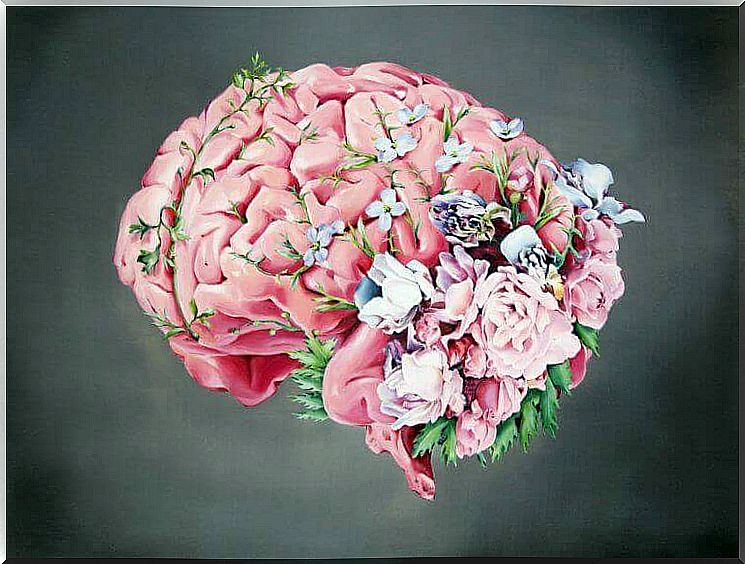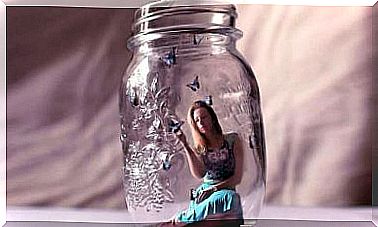Are You Plastic, Glass Or Steel? How To Build Endurance

Are you plastic, glass or steel? How we face daily difficulties determines the material we are made of. What is known today about how we face problems is that it is never too late to change the element that determines our reactions, that is, to become stronger, from an even better material and capable of resisting the elements. It’s never too late to develop endurance.
If there is a decisive aspect to enjoy adequate mental and emotional well-being, it is to understand what kind of mechanisms we use in the face of obstacles in life. In this context, two of the most common behaviors that we usually have in our daily lives are, on the one hand, avoidance, and on the other, quietness or “non-resistance”.
Far from blaming ourselves for not knowing how to issue an alternative to these behaviors when we suffer from stress, when a third person destroys us or when we find ourselves in a dead end tunnel, what we have to do is pay attention to the most relevant aspects at these times. The need to run away or to be quiet are pre-programmed responses in our brain. They are a defense mechanism that came with us from the factory, and if we do not update the system, we will have these resistances that are, in fact, designed for our survival, but that do not contribute to our happiness.
In this sense, developing each person’s stamina is an aspect directly related to our level of well-being. Understanding it can help us a lot in this goal.

Brains more and less resistant to emotional stress
Most of us have asked this question at one time: “Why are people able to face adversity so smoothly?” . We are amazed by his serenity, his optimism and his eyes capable of seeing possibility where others can only see walls and bars. Did these people prepare for the problem in advance? Have you taken courses, perhaps have an innate wisdom, or is your brain simply different?
Well, we’ll be left with the last option: the answer is in their brains. So, as strange as it may seem to us, there are people with brains that are much more resistant to stress. There are personalities with more emotional resources to calm anxiety, to avoid irrational mental speeches in limiting situations, etc. The Weill Corner School of Medicine, in New York, did some very interesting work in which the result determined, among other things, a direct relationship between a child with a healthy attachment and a more skillful response to stress and anxiety.

Inadequate attention or an education full of affective needs alters children’s brain development. The specific structure that is most affected is the amygdala, a neurological control center so evolutionarily old and so sophisticated that it is in charge of regulating fear and our emotions. Thus, a child who has experienced a childhood deficient in x aspects will have more difficulties in managing their emotions, both in childhood and later in adulthood.
Are you plastic, glass or steel?
As we mentioned at the beginning of the text, it doesn’t matter what kind of mechanism we use today to respond to difficulties that arise, to deal with stress and adversity. It doesn’t matter if we’re the kind of person who runs away, or the kind who stands like a wooden tower in the middle of a storm, until the storm breaks and collapses. We can all learn new strategies and, in this way, modify our brain. This is possible because of brain plasticity – our brain’s ability to change, to be plastic.
Training and stimulating the brain to have new ways of looking and new strategies makes it a tougher, more skillful and more sophisticated machine. The goal is to reach the point where our brains don’t just help us survive by turning on the fear switch in situations that our minds interpret as dangerous. What we really want is for him to accompany us, to be our accomplice in the path of happiness.
So let’s look at what the three types of stress responses are, and how to develop resistance to each of them.
steel’s answer
Stress hits and returns in people of steel. This type of response, far from being healthy, carries many risks. Being completely impervious to stress will take away all chances of learning something from the situations that arise and cause it. Also, in a way, no one can be completely waterproof, no one is actually steel, because our coating is made of something much more subtle, which is emotions.

What can be done in this regard is to understand that far from being a wall in the face of problems, and achieving the feat of making them bounce off our armor, we must equip ourselves with skills to better manage what comes before us: the goal is filter, manage, understand and transform the situation.
The plastic answer
Interestingly, among ways of dealing with resistance, most of us apply this strategy. Its characteristics are as follows:
- We have several patched points in us, effects of stress and adversity.
- We are flexible and we have some resistance. However, we often have the clear feeling that we are going to break. It’s like living balancing on a tightrope.
The answer from the glass
As we can imagine if we think of a glass, the response of these people is not the most adequate. In fact, it’s the worst of them all. This is the person who has the fewest resources to deal with stress, is the one who, after making a great effort to give in, to adapt, ends up breaking down. That way, what gets to her leaves her in pieces.
Healthy Emotional Control: How to Build Endurance
The tips for having healthier endurance tell us the following: we have to create a midpoint between strength and flexibility, a space of maturity in which we know how to manage, prioritize and transform. If we let our innate psychological defenses speak louder, we will be opting for the least resistant material: glass.
On the other hand, if we choose the most resistant material, we will be using all our energy to oppose something, to build a wall that protects us from life. This is undoubtedly the strategy of steel.

So none of these answers are good? What should we do then, how to deal? The key to developing healthier stamina is empowering our self-confidence to know we can have something better. Therefore, we will not let that moment destroy us, break us, nor will we put on armor and wait for the impact of the storm.
It is necessary to build a material along the way. With characteristics of a diamond as well as a bamboo. A flexible but strong material that allows us to move with the difficulties to learn from them. A material that even if bends, returns to its original position having learned some important teaching of the situation, to move forward with even more fluidity.
Let’s start working today for the good of our vital energy.








